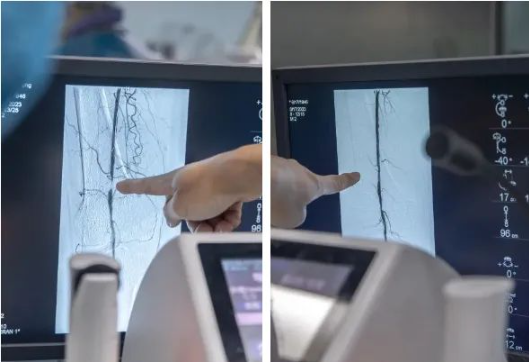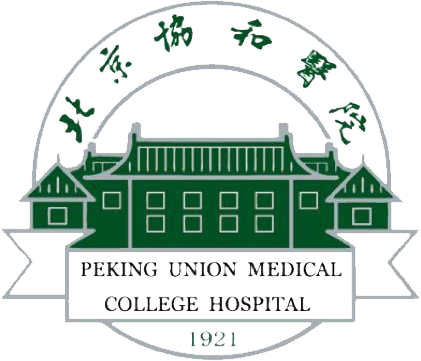Recently, the Department of Vascular Surgery at PUMCH successfully completed the first clinical studycase of VasCure robot-assisted peripheral endovascular intervention surgery. The surgery went smoothly, and the patient had a good recovery. Proprietary intellectual property rights have been granted to the VasCure robot, developed jointly by Professor Hou Zengguang’s team from the Institute of Automation, Chinese Academy of Sciences (CAS), and Professor Liu Bao’s team from the Department of Vascular Surgery at PUMCH. The robot represents another original and cutting-edge breakthrough in the convergence of medicine and engineering.
Ms. Zhang, 77 years old, experienced intermittent claudication in her right lower limb three months ago. Examinations revealed multiple atherosclerotic changes and luminal stenoses in both lower limbs, requiring further surgical treatment. On the day of the surgery, the surgical team used the VasCure robot and successfully performed a series of actions under condition with complex lesions, including slowcareful recanalization ofpassage of the catheter navigated by the guide wire through the occluded segment CTO lesion using catheter navigated by guide wireto the distal artery, balloon pre-dilation, precise stent accurately positioning, stent deployment, and balloon post-dilation. Additionally, for the first time, the robot autonomously advanced the guide wire within the blood vessels. Postoperative angiography showed good visualization and unobstructed blood flow at satisfactory speed in the superficial femoral artery of the right lower limb, indicating a successful surgery. Able to walk on the second day after the surgery, the patient expressed great satisfaction with the results.
▲In the control room, from left to right: Shen Le, Executive Deputy Director (presiding over work) of the Department of Anesthesiology at PUMCH, Xie Xiaoliang from the Institute of Automation, CAS, and Liu Bao, Deputy Director of the Department of Vascular Surgery
▲In the operating room, from left to right: Feng Zhenqiu from the Institute of Automation, CAS, Shao Jiang and Lai Zhichao from the Department of Vascular Surgery, PUMCH

▲Comparison of the arterial angiogram before (left) and after (right) surgery
Currently, the VasCure robot enables millimeter-level precision in operations, making surgeries safer. It effectively filters out hand tremors of the surgeon, improving stability. With its innovative dual-channel collaborative delivery technology, it enables coordinated delivery of more than one guide wires, balloons, and stents in complex procedures. It also monitors the autonomous advancement of guide wires and catheters within the blood vessel, potentially shortening patients’ exposure to X-rays.
“The range and complexity of peripheral vascular diseases are extensive,” explained Liu Bao, “in scenarios such as challenging vascular surgeries, remotely assisting complex interventions, and supporting the growth of young doctors, the application of endovascular robots will go a long way.”
Next, the PUMCH vascular surgery team and the CAS team will continue to develop and improve the environmental perception and force feedback of VasCure. The goal is to partially replace the manual operation by doctors with the robot in certain specific circumstances and reduce the intraoperative use of X-rays. The team will also repeatedly test the endovascular automated navigation system, making it possible for the robot under monitoring to autonomously advance guide wires.

Written by Gan Dingzhu and Ye Xiaolin
Photographed by Sun Liang
Translated by Liu Haiyan
Edited by Cui Liqiang and Wang Yao



